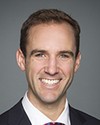I do really appreciate Scott expressing his concern over my riding being neglected in this diagram under rural-urban. To me, it actually looks more urban and small urban than it actually looks rural-urban. I have one of the largest rural ridings in southern Ontario, with a very strong rural presence. My largest town is 8,000 people.
I had three electoral reform town halls, which were very well attended, I might add. They all were very much in favour of electoral reform—as am I, to be perfectly up front. The biggest concern that all of them expressed was this rural mix. How do we get it right so that we end up maintaining rural representation? Every time we redraw the maps, our ridings get larger and larger. My riding is barely sustainable now. It takes four hours to drive from one corner to the other corner of the riding. I have 19 municipalities, one Mohawk territory, two county levels of government, the attached myriad entities—economic development, business, community, social—all of which I'm trying to represent on the Hill and lobby on behalf of. Compare that with an urban centre like Toronto, which has 30 MPs and one municipality, one chamber of commerce, one housing authority.
The deep concern that they have, and that I have, is what are we going to do in the rural ridings? Under your map here, once again it looks like the rural areas will get crunched, will get hammered. As I said, you don't even have anything where my riding is. Where you do have your circles, they mostly just happen to be right near a small urban centre, not a large urban centre like in Ottawa, but Kingston, Peterborough, Cobourg, Trenton, Belleville. These are all larger centres in eastern Ontario that all have representation.
I guess Scott's riding will expand substantially, and maybe Haliburton; I don't know. I don't know how you cover this massive hole that you have in the middle, which is actually the largest riding in the whole bunch.
I guess I would throw it out there once again: how do you address...?





